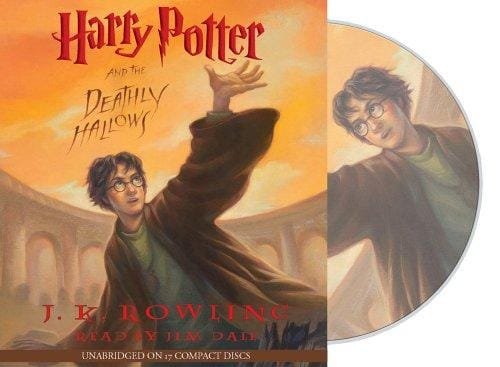Harry Potter and the Deathly Hallows: An In-Depth Review and Analysis
Discover plot, themes, character arcs, and cultural impact of Harry Potter and the Deathly Hallows in this comprehensive, spoiler-light 800-word review.

Introduction to the Final Installment
Harry Potter and the Deathly Hallows is the breathtaking conclusion to J.K. Rowling’s epic fantasy series. Published in 2007, the seventh book ties together every loose narrative thread while launching readers into a high-stakes, globe-trotting adventure far beyond the walls of Hogwarts. For fans, the novel is more than a finale; it is a farewell tour through the Wizarding World that shaped a generation’s reading habits and imagination.
Quick Plot Overview (Spoiler-Light)
The story opens with Harry, Ron, and Hermione abandoning their final year at Hogwarts to fulfill Dumbledore’s secret mission: locate and destroy Voldemort’s Horcruxes. Their quest takes them from the Ministry of Magic to Godric’s Hollow, the Forbidden Forest, and finally to Hogwarts for a climactic battle. Along the way, they learn of the mythical Deathly Hallows—three legendary objects said to make their owner the master of death. Rowling balances action with introspection, allowing characters to confront loss, loyalty, and destiny.
Themes That Resonate
The Power of Choice: Although prophecy drives the plot, Rowling insists that characters shape their own futures. Harry’s decision to walk into the forest, fully aware he may die, underscores the transformative power of free will.
Death and Sacrifice: From Hedwig’s heartbreaking departure to Snape’s revelatory memories, sacrifice permeates the narrative. Rowling explores grief with honesty, affirming that love, not magic, is the ultimate protective charm.
Friendship and Loyalty: The trio’s bond is tested by jealousy, fear, and hunger, yet they choose forgiveness repeatedly. Their unity offers a blueprint for enduring friendships in the real world.
Character Arcs Worth Celebrating
Harry evolves from the Boy Who Lived to a seasoned leader accepting mortality. Hermione, ever the strategist, balances intellect with empathy, proving brains and heart are equally heroic. Ron wrestles with self-doubt yet returns stronger, validating the everyman hero. Antagonists also gain depth: Draco’s hesitance, Narcissa’s motherly love, and even Voldemort’s hubris enrich the moral tapestry.
Snape’s Redemption: A Closer Look
No character arc is as polarizing as Severus Snape’s. Through the Pensieve, readers witness his unrequited love for Lily Potter and the unbearable guilt that pushes him to double-agent heroism. Whether his bullying behavior is excusable remains debatable, but Rowling crafts him as a tragic figure whose final actions alter the tide of war.
World-Building Beyond Hogwarts
The Deathly Hallows expands the Wizarding geography—from camping in remote British woodlands to infiltrating Gringotts’ dragon-guarded vaults. The introduction of xenophobic policies at the Ministry mirrors real-world regimes, adding political heft. Rowling’s rich lore about wandlore, goblin trust issues, and the Tale of the Three Brothers immerses readers in folklore quality storytelling.
Pacing and Narrative Structure
The novel’s pacing divides fans. The middle “camping” chapters, often criticized for sluggishness, serve a thematic purpose: illustrating isolation under tyranny. They allow space for character growth and for readers to feel the drag of hopelessness that war induces. Once the trio returns to action, the pace accelerates to an electrifying conclusion.
The Battle of Hogwarts: Epic Yet Intimate
Rowling masterfully choreographs chaos and clarity during the final confrontation. Iconic moments—Professor McGonagall animating statues, Neville destroying Nagini, Molly Weasley’s unforgettable duel—blend cinematic spectacle with emotional payoff. Even minor characters are given heroic beats, honoring the series’ ensemble spirit.
Comparisons to the Film Adaptation
Warner Bros. split the story into two films, a decision that preserved nuance but shifted certain emphases. The movies excel in visualizing the Battle of Hogwarts and the heist at Gringotts. However, they trim subplots like the backstory of Dumbledore’s sister, Ariana, and the moral ambiguity of wand ownership. While the films offer a faithful retelling, the book’s internal monologues provide richer context.
Legacy and Cultural Impact
Harry Potter and the Deathly Hallows sold 15 million copies in its first 24 hours, cementing itself as a literary phenomenon. It spurred midnight release parties, cosplay culture, and scholarly discourse. Its themes of resistance against authoritarianism resonate across generations, making it more than just a children’s fantasy but a cultural touchstone.
Why You Should Revisit the Novel
Whether you are a first-time reader or a veteran fan, revisiting The Deathly Hallows offers fresh insights in adulthood: ethical gray areas, the fallibility of mentors, and the bittersweet nature of growing up. The layers of symbolism—Resurrection Stone as acceptance, Elder Wand as power’s folly, Invisibility Cloak as humility—invite new interpretations with each read.
Conclusion
Harry Potter and the Deathly Hallows successfully delivers a satisfying, emotionally resonant finale. Rowling honors her characters’ journeys while challenging readers to reflect on sacrifice, courage, and love. Its enduring popularity proves that great stories transcend age barriers, continuing to inspire future wizards and Muggles alike.



